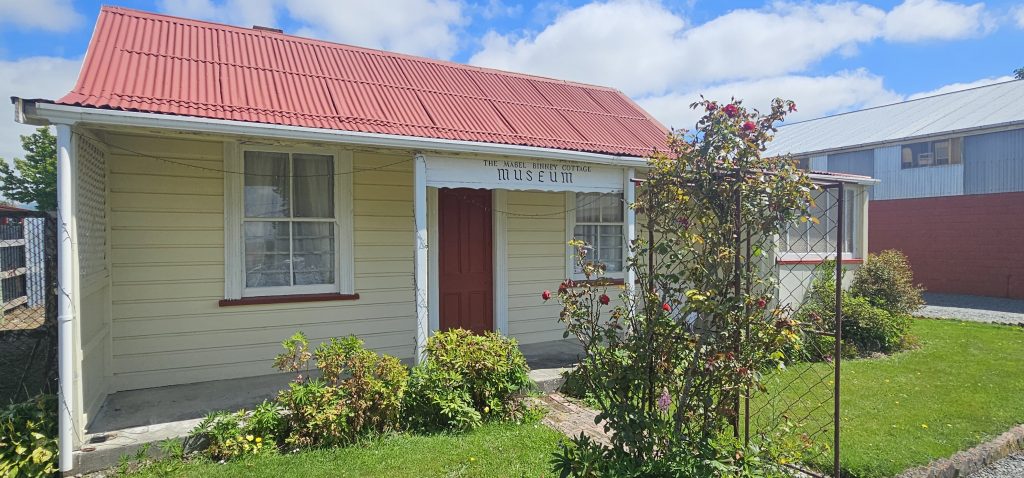The life and memories of an iconic Fairlie woman are continuing to be preserved for future generations.
Mabel Binney was born in 1882 and resided in her family home in Mt Cook Rd until 1970 when she was moved to the Foundation of the Blind home in Christchurch, where she died in 1972.
Her father, Joseph Binney, immigrated from England in 1879 along with her mother and settled in Timaru before moving to Fairlie, where he set up as a blacksmith on the site where the Fairlie Heritage Museum now stands.
In 1972, before her death, she gave her home and the contents of it to the Mackenzie Historical Society, of which she had been an original member, to be used as a museum.
More than 50 years later, Mabel Binney’s 1900s colonial cottage is still in original condition and remains a staple of the heritage museum.
Museum member Lynn Dobson has been one of the individuals involved with maintaining the cottage.
She said it was her special interest.
‘‘We have three original rooms. Unfortunately we haven’t got enough of her stuff do up the whole house but one of the rooms is all her.
‘‘The old laundry has been turned into a display room for old dolls and the storeroom has been filled with mannequins and old clothes.
‘‘The dining room, though, is all original down to the paper and furnishings.’’
Miss Binney was a first-decade pupil of Fairlie School, the first woman member of the golf club and an avid bowler, tennis player and indoor bowler.
She was a member of the Women’s Institute, Women’s Division of Federated Farmers and belonged to the Union Church of St Columba and St Stephen’s.
When her parents died she stayed in the family home which was located next door to the smithy and began to take in male boarders.
Museum executive Dick Guard lived next door to Mabel during his childhood.
‘‘Mabel owned all this land here to the other side of our house and right through.
‘‘My father brought the front section off her, where we got the house and rented the back section until he could afford to buy it.’’

He said she was a good neighbour but that she would definitely have them on sometimes.
‘‘I’d bring groceries to her on occasion. She was a bit of a dag.
‘‘She used to come into the workshop with a pinny on and a walking stick and go around and pick up little bits of wood.
‘‘One of the fellas who worked with us, Colin McKinnon, the ex-milkman, was cunning and began gluing the blocks to the floor for a bit of a laugh.’’
Museum guide Garry Kerr said he also used to deliver groceries for Miss Binney when he was 13.
‘‘She’d be sitting in the chair with a glass of cordial, not that sweet stuff you’d drink now.
‘‘She always had the same order whether it was weekly or fortnightly and there was always a can of condensed milk.
‘‘Wally Smith, the manager of the National Mortgage — they also sold groceries — said to me when I’d pick them up to bring them to her on a Wednesday, that ‘it would take all night to drop them off because she’d be talking history’.
‘‘Looking back I really wish I had listened to her more.’’
He said the cottage was no longer getting as many visitors as it once had.
‘‘When I first came here with the museum it could have easily been 30 people going through a day.
‘‘Now we’d be lucky to get 30 a week.
‘‘I think the last meeting the number was at 46 for the month.
‘‘I think it might be down to the vulnerability of the old dollar but we’d love to start seeing more people through again.’’
Mr Guard said the cottage was important piece of Fairlie history — ‘‘especially for us older people’’.
‘‘We all knew Mabel in one way or another. She is an important part of the history here.
‘‘The cottage really gives people a feeling for what she was like and I hope people will continue to visit and appreciate that it is still here.’’





